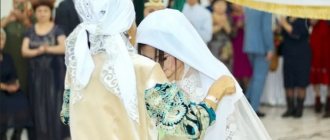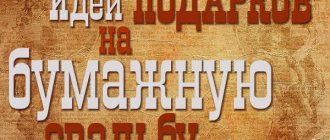Family relationships are a very interesting topic, which becomes especially relevant after the wedding ceremony. Who the bride and groom relate to whom after the wedding is an exciting and serious question, especially for newly-made relatives. In the old days, knowing your ancestors and all relatives, blood and non-blood, was considered an honorable and important stage in the beginning of a life together.
In the modern world, young people often do not know the correct names of certain relatives and who is related to whom after the wedding. If a child appears in a family, it is not difficult for him to understand who mom, dad, grandparents, sister or brother are. But with other family relationships, if not confusion arises, then simply elementary ignorance.
How did the relationship arise?
About two hundred years ago, blood relatives traditionally lived together: in the same estate, courtyard or large house. It was also customary, if a son was born in a family, to build him a house next to his parents’, where he could bring his wife after the wedding. It happened that one street in the village consisted only of relatives’ houses. Then the concept of kinship was something common, and everyone knew who was related to whom in the family after the wedding.
In the old days, family relationships, even distant ones, were considered very strong, and mutual assistance and support were not considered a favor. Preserving the family in order to survive and continue it is the main goal of all close people of past centuries, connected in one way or another.
Modern society is far from the old ideas about family. Unfortunately, now even parents and children living close to each other see each other very rarely, not to mention distant relatives. Blood ties are not supported by foundations, free material assistance, or a common family structure, so family relationships, especially distant ones, are under threat and are gradually dying out.
Joint wedding ceremonies
Traditions are passed on from generation to generation. Many rituals have undergone many changes or remained in the past, but some of them have survived to this day.
Dance of the groom with his mother and the bride with his father
The dance is carried out in the process of celebration. There is nothing unusual about it. Just a guy asking his mother to slow dance. All the guests are watching this. The subtext is this: the guy used to be his mother’s son, but now he has become a man, the head of a new family. She passes him into the hands of a young girl who will now take care of him.
A similar situation with the bride. She slow dances with her father. If he is not there, then with his godfather.
Lighting up the family hearth
A beautiful and exciting ritual is performed in the evening, when you can turn off the lights in the hall and enjoy the twinkling lights. The candles are held by the mothers of the young, because it is women who are the guardians of the family hearth. Fathers light the fire because they are responsible for the fire in the family.
READ
How to celebrate a fun second wedding day: traditional and unusual ideas
At this time, the bride holds one large wedding candle. It is set on fire from mothers' candles. In this way they pass on the family hearth to the newlyweds. After this, the bride and groom dance a slow dance, holding a candle together. Quite often, guests with candles stand around the couple. It is a pleasure to watch such a ritual.
Removing the veil
The ceremony is called “unbraiding the bride.” In the old days, they took off the wedding wreath with ribbons, unraveled the braids, and then tied a scarf. So the bride said goodbye to girlhood, became a housewife, wife, and future mother.
The ritual takes place in the late afternoon. There are no specific rules on how this should be. According to some information, the mother-in-law takes off the veil and gives parting words after each hairpin pulled out. According to other sources, this is done by the legal husband. After removing each stiletto, he kisses his beloved on the cheeks.
There are unmarried girls standing around. The bride approaches each one, holds a veil over her head, dances a slow dance, making one circle. At the end of the ritual, the daughter-in-law dances with her father-in-law in a headscarf.
Relationship by blood
Even if there is no tradition in a young family of knowing all of their relatives, there is still an interest in who is related to whom after the wedding. Family ties, whether strong or not, have a certain degree of importance, especially if they are blood.
The first degree of kinship refers to children and parents, blood sisters and brothers who have a common father and mother. Half-siblings are those who have the same father and different mothers, while half-siblings, on the contrary, have the same mother and different fathers.
The second related degree belongs to grandparents and grandchildren. This level of family relationships is as important as the first, because external similarities, diseases, and other physical and psychological characteristics are passed on from grandparents to the same extent as from parents.
The third degree of relationship is already with the prefix -great: great-grandparents. For grandchildren, these are the parents of their grandparents. This category also includes uncles, aunts, nephews, that is, brothers and sisters of parents.
Relatives from the groom's side
We start, traditionally, with the parents: the groom’s mother is the mother-in-law, the groom’s father is the father-in-law. Of course, not a single girl addresses them like that in person. It is worth saying a few words about the etymology of these related terms: the words “father-in-law” and “mother-in-law” come from the ancient Indian “svacuras” - “blood of all”, that is, this is the recognized head of the clan, whose blood flows in all subsequent generations. But what to call her husband’s parents after the wedding is determined by each bride herself, in accordance with the traditions of her own family and personal wishes: in some families it is customary to call her husband’s parents “mom” and “dad” as a sign of respect and recognition of their closest people. But in the modern world, the option by first name and patronymic is increasingly taking place - this is no less respectful treatment.
Groom's relatives
After legal marriage, information about who is related to whom after the wedding acquires special significance. Relatives on the groom's side for the bride will be designated as follows: father - father-in-law, mother - mother-in-law, brother - brother-in-law, sister - sister-in-law, husband's brother's wife - daughter-in-law, and his sister's husband - son-in-law. The parents of the bride and groom call each other matchmakers after the wedding.
Distant blood relatives
Nowadays, interest in who is related to whom after the wedding has gradually begun to fade away. With the birth of a new family, which will slowly acquire children of its own, distant relatives will not have much importance given the way of modern life. In order to pay tribute to traditions, you need to have a lot of free time, which is limited in the twenty-first century.
If you are interested in finding out who is related to whom after the wedding, you can draw up a family tree, taking into account that its lateral branches also belong to the category of blood relatives. Usually, at the beginning of the family, common ancestors are indicated, which are distant relatives. It is from them that the countdown begins.
The fourth degree of consanguinity represents cousins, grandparents, and great-nephews (grandchildren of siblings).
The fifth degree of relationship is cousins, aunts and uncles, and nephews.
The sixth, most distant, are second cousins, that is, children of cousins of parents.
The remaining degrees of consanguinity are considered very distant and are not tracked by many.
Characteristics of wedding guests for the host - examples
A correctly and succinctly drawn up description of guests for a wedding toastmaster is an example of a responsible approach to organizing a celebration.
Regardless of the experience the host has, a guest list that includes a description of each guest will help him plan the evening. This is especially true at weddings with a large number of guests. Having brief characteristics of the guests, the toastmaster will help the guests get to know each other in a playful way. And it will be easier for him to lead the evening - instead of thinking about who is who, he will be able to fully concentrate on the celebration.
Relatives not by blood
Very useful and interesting information about who is related to whom after the wedding, if the relationship is not blood. You can read about the close relatives of the bride and groom above, but there are many others who are related by non-blood ties. So, if the groom has a child from another marriage, then for the future wife he will be a stepson or stepdaughter. A wife is considered a stepmother for her husband’s natural son or daughter, and a stepfather is considered a stepfather. The godmother and father (who baptized the child of friends) are godmothers among themselves.
Depth of kind
The clan and its duration depend on the number of generations of children who are related by blood. They are the ones who determine the scale of the family tree. Usually the branches and crown depicted schematically are families of children. Due to the difficulty of tracking weddings, deaths and other events that influenced their family, special chronicles were kept in ancient aristocratic families.
Nowadays, tracking a family lineage deeper than the fourth generation is considered difficult; in this situation, it is especially difficult to understand who is related to whom after the wedding. The relatives of young people (non-blood) often do not have significant significance if there is no close spiritual or friendly connection between these people.
A child born into a family of nephews is called a niece (nephew grandson or granddaughter, great-grandson or great-granddaughter and further down the depth of birth). The grandson of a brother or sister makes a grandparent out of an aunt and uncle, and such children are called great-nephews.
Examples of characteristics of guests at a wedding for the toastmaster
Alexey's mom and dad - full name
It’s hard to imagine how much work they had to put in to raise such a wonderful son, but they both did an excellent job. Mom’s kindness, gentleness and patience, along with dad’s determination, hard work and sensitivity, were embodied in their children.
In their free time from raising children, they work as judges - mom in the magistrate's court, and dad in the Moscow military court - major general of justice.
In addition, dad teaches at the law department of Moscow State University, built a “house in the village”, where he and his mother take a break from Moscow on weekends.
Alena's mom and dad - full name
They got married in Leningrad and a year later, the fruit of their love appeared - our bride.
Mom, like a real military doctor’s wife, loves to travel... especially to military camps and garrisons, loves to cook, raise children and, of course, loves her husband very much.
Dad, like a loving husband, did not deny his wife anything, and took her... to garrisons and military camps from St. Petersburg to the Far East.
In his youth he was interested in music, played bass guitar in a band, loves photography and going fishing with his son.
Alexey's sister is Yulia, aka Yulenka
Unlike Sergei, she did not deviate from the path of a lawyer and, last year, received a law degree. faculty of Moscow State University.
Works in a notary's office and plans to become a notary.
One of the groom's most trusted persons. Knows many of its secrets and secrets.
And finally, she is simply beautiful. She is accompanied by a friend, Vasily Filimonov.
Alena's beloved brother - Vadik
Vadik is interested in football, archery and has even won prizes in competitions.
He loves fishing - he already has hundreds of fish in his collection, from crucian carp to snakehead. Recently he has been studying in St. Petersburg.
Alexei's grandmother - Zoya Petrovna
For the closest people - Grandmother Zoya, who is also the groom's grandmother and mother - Sergei's mother. Previously, I used terms such as debit and credit, but now I am ready to give advice to anyone: where is the best swimming pool in Mytishchi and in which forest, in those parts it is better to walk and where it is better to ride a bicycle. The consultation will be based on long-term personal experience.
Alena's grandmother - Rimma Petrovna
For the bride, she is the beloved grandmother and mother of Papa Mary.
The bride owes much of her good health to the time she spent with her grandmother in the village.
Rimma Petrovna has a house in the village and runs her own farm.
Alexey's grandmother - Elizaveta Stepanovna
For the closest people, Grandma Lisa, who is also the groom’s grandmother and mother of Sergei’s father. It fully corresponds to the words of Chekhov: “Everything in a person should be beautiful.”
Alena's great-grandparents - Alexey Vasilievich and Irina Igorevna
Alexey Vasilyevich is a wonderful organizer, a well-known toastmaster in the family circle and a cheerful person in life, he was very upset when he found out that there was already a toastmaster at this wedding, since from the very birth of his granddaughter... he wanted to be a toastmaster at her wedding.
Irina Igorevna, support and rear of Alexey Vasilyevich. In addition to the fact that she organizes home life, she is in no way inferior to her husband in terms of organizing celebrations.
The Verkhodin couple - Aunt Sonya, Uncle Lesha and Alexei's cousin Igor
Sonya is Sergei's aunt and sister - the groom's mother.
Sonya has been saving people in ambulances for a long time, but now she works in commerce. A very purposeful and strong woman.
Sonya's husband is Alexey. Loves the speed and noise of the engine. There are rumors that Alexey overtook Michael Schumacher himself, but... just before the finish line, he gave in to him... so as not to offend him. And, of course, Igor is Sergei’s cousin.
He loves cars very much and is now on the path of determination in life.
Alena's aunt and uncle - Sofya Nikiforovna and Ilya Matveevich
Sofya Nikiforovna is the bride's godmother. He saves people by working in an ambulance. He is a very kind person and I want to note that at one time there were rumors that Dr. Aibolit became so kind after he worked with Sophia on the same shift.
Ilya Matveevich is Sophia’s husband. Works at Russian Railways. It was Ilya Matveevich who taught the bride to ride a bicycle.
Uncle Sasha and Aunt Sophia are Alexei’s uncle and aunt, as well as his cousins Alla and Vera and all four, oddly enough, are the Arkhipov couple
Uncle Sasha is not only the groom’s uncle, he is also the brother of the groom’s father. Alexander is following the path of a professional photographer. If Sergei wants to restore the most interesting moments of his childhood, he will always have such an opportunity, simply by looking at the photographs taken by Alexander. Yes, the first sneakers in Sergei’s life and the very first chewing gum were presented by Uncle Alexander. So this is the groom’s favorite uncle =). Next to Alexander is his wife Sophia, who manages to combine 4 things at the same time. Work, housekeeping, raising 2 daughters and... heading the selection committee for choosing grooms for daughters.
...And finally, the above-mentioned daughters Alla and Vera are the groom’s cousins. It seems that just recently they celebrated how they turned 5 years old, and now two brides have already grown up. They are not just beauties, Alla loves animals very much, knows how to ride horses and... shoot with her eyes, and Vera draws beautifully, and... makes even creative young men, who usually do not notice anything around them, worry.
Cousin and its depth
If the bride and groom have cousins, they are also called cousins, then for young children they will also be cousins, but now aunts and uncles. These categories are considered consanguineous, but distant. Knowing your family tree and tracing all branches two or three hundred years ago was considered the privilege of aristocrats and was confirmation of a high position in society. The same applied to simply rich people, landowners and merchants.
In some European countries, the tradition is still preserved to honor their ancestors and draw up a family tree, which is usually traced from father to son. That is why in royal and wealthy families the birth of an heir was of paramount importance for the family.
It is no secret that modern society is far from ideal relationships between relatives, even blood ones. Conflicts based on family troubles, gossip, material and housing problems are increasingly leading to real wars, where there is no place for love and respect for the family. And even the fact of creating a new family, for which it is so important to know who is who after the wedding, the relatives of the groom (or, conversely, the bride) cannot always accept for many reasons.
Characteristics of friends for a wedding with humor
The list of guests with characteristics should begin with a description of the wedding friends and close relatives. There are several ways to introduce your guests.
Funny text introducing friends should not offend them or make fun of their shortcomings
If there are a lot of people, it is impossible to introduce them to each other. In this case, you can immediately start the dating game . The toastmaster can take turns calling guests who have the same characteristic (for example, a name starting with “A” or the presence of a certain item or color in clothing). Everyone who comes out introduces themselves, and then they congratulate the newlyweds or participate in the competition.
When there are not very many people, it is a good idea to voice the name and brief description of the guest in a comic form. To create a short description, you need to conduct a quick interview in which you need to find out:
- connection with the bride or groom (studied together, neighbors, etc.);
- profession;
- personal qualities or preferences;
- talents.
Here are examples of brief descriptions of guests in prose.
“A racing driver with many years of experience, a classmate of the groom and simply an excellent surgeon. Meet Alexey!”
“The queen of debit and credit, a resilient beauty, a wonderful financial director and a devoted friend of the bride. Ladies and gentlemen, Natalia!
Introducing friends at a wedding
Funny and humorous characteristics of people can be presented in poetic form . This requires creativity and a little humor. For example:
“This guest doesn’t drink with us. We will offer him compote and ask him to say a toast, to wish him love and prosperity.
We say hello to physical education - Let the athlete rise. He has been friends with his fiancé since childhood. Meet Artem Voronov.”
You can also find out each other's names using musical compositions . This is exactly how the toastmaster conducted the introduction in the video. To take advantage of his idea, it is necessary to clarify the list of invitees by name in advance and select appropriate songs. However, this is only feasible if there are few guests.
Nephews
They fall into the category of close blood relationships, and sometimes can even replace children for aunts and children who do not have their own. Nephews are the offspring of half-siblings. They are also first cousins to their aunt and uncle's children.
Unfortunately, it happens that cousins or nephews marry each other. This leads to various genetic pathologies and degeneration. In this case, it is best to know who is related to whom after the wedding. The relatives of the bride and groom establish family relationships that cannot be turned into marriages of people by blood. Meanwhile, in many European and other countries, such marriages are not officially welcomed, but are not prosecuted by law either.
Grand-relatives
This relationship is more in-depth, and it affects brothers and sisters of different branches of the family tree. For example, when the children of sisters or brothers grow up and start their own families, they start a new branch. Therefore, the more children there are in such marriages, the more magnificent and branchy the crown looks. However, the level of relatedness in all families is determined only by the depth of the roots.
It is possible to decipher the meaning and meaning of the names of all relatives and relatives by blood only by studying the family life of a particular person. In order to understand who a great-nephew is, trace the family relationships of a woman who has a blood brother or sister. For example, her children will be considered nephews for half-blood relatives. Over time, growing up, nephews get married or get married, have their own children, who will already be called grandchildren. In the future, the depth of the clan is determined precisely by nephews, great-grandchildren, and further with the prefix -great-great.
In addition to the well-known names of close relatives and in-laws, there is a huge variety of secondary and tertiary relatives, which can be called habitually or even go beyond the scope of family relations. Modern families increasingly prefer, or this happens for objective reasons, not to track the depth of kinship, and family inheritance is passed on regardless of gender and number of children.










